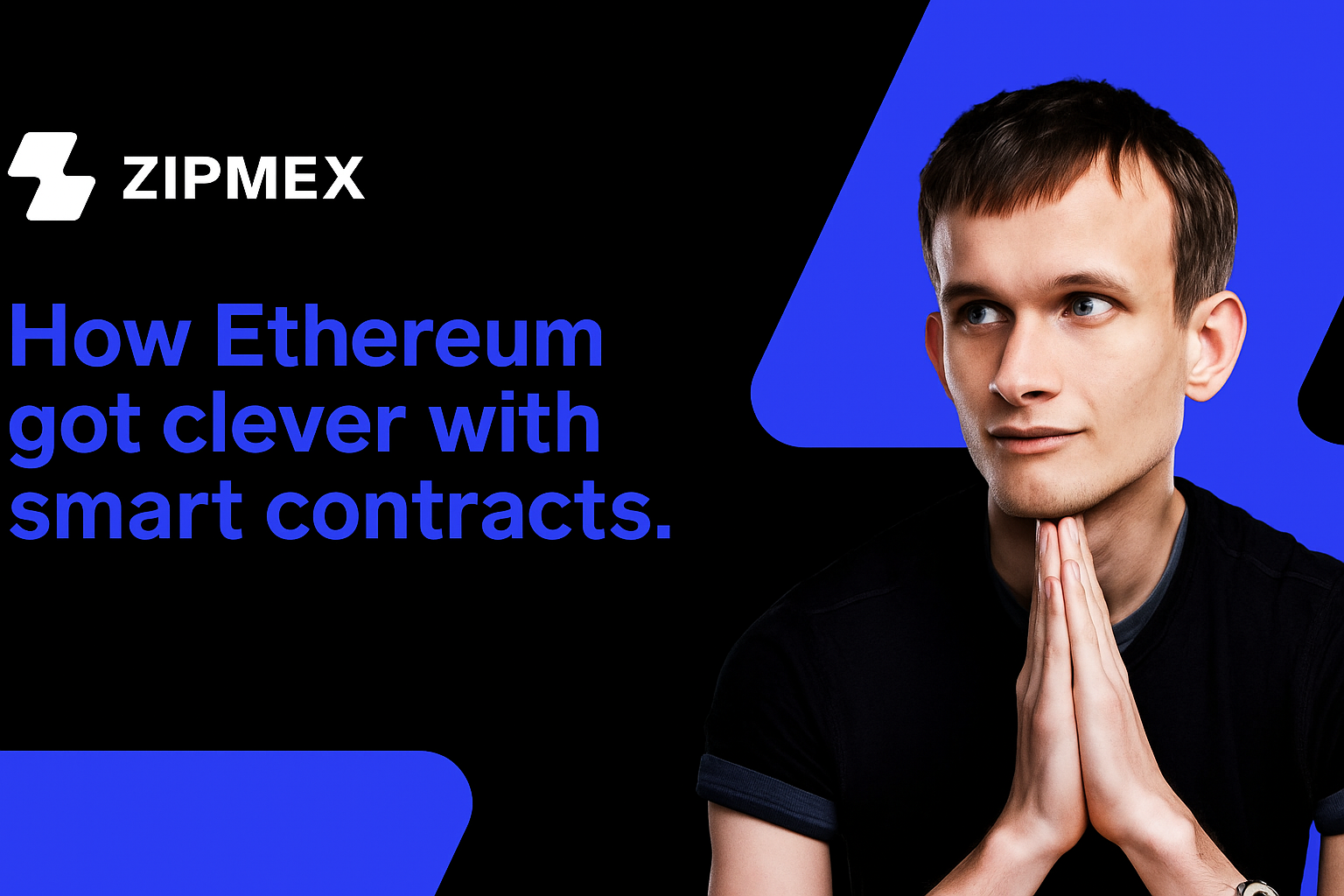You probably must have heard about generations of blockchain. But did you know the first generation of blockchain is typically referred to as the Bitcoin blockchain?
Well, now you know. These blockchains are primarily used to process transactions. The Proof-of-Work algorithm is used in the first generation of blockchains.
The second generation of blockchains is also built on Proof-of-Work; however, they have more functionality compared to the previous generation. The Ethereum blockchain, for example, can handle smart contracts and sustain decentralized apps (dApps).
In contrast, third-generation blockchains (such as Cardano) are more scalable, have faster transaction speeds, and consume less energy.
A Promising Technology
It’s feasible to look back on blockchain’s evolution and divide it into stages highlighted by significant developments and inventions. Because blockchain technology has only been around for a fraction of the time that the internet has, there are likely to be more significant advancements to come. Experts have begun to divide the history of blockchain into at least three major stages even today.
While ideas for the blockchain were circulating in computer science circles, Satoshi Nakamoto, the pseudonymous creator of Bitcoin, defined the blockchain as we know it in the white paper for BTC. In this way, the Bitcoin network gave birth to blockchain technology. While blockchain has since been used in a wide range of other industries, it was built in some ways specifically for this digital currency and the aims of digital currencies in general.
Blockchain technology established the basic notion of a shared public ledger that enables a cryptocurrency network in its early phases. On bitcoin transactions, Satoshi’s blockchain concept uses 1 megabyte (MB) chunks of data. Blocks are connected in an immutable chain using a complicated cryptographic verification process.
Many of the essential aspects of these systems were established by blockchain technology even in its earliest incarnations, and they continue today. Indeed, the blockchain of bitcoin has remained virtually untouched since its inception.
Second-generation blockchains typically include decentralized applications (dApps), constructed on top of the blockchain layer to provide an ecosystem of services like forecasting, voting, and lending. The two most distinguishing elements of second-generation blockchains are smart contracts and decentralized applications, which demonstrate the disruptive potential of blockchain technology and improve everyday life.
The importance of Smart Contracts
Developers began to feel that a blockchain could do more than just record transactions as time went on. The founders of Ethereum, for example, believed that blockchain administration could benefit assets and trust agreements. Ethereum is the second generation of blockchain technology in this sense.
The introduction of smart contracts was the most significant breakthrough brought about by Ethereum. Two independent companies in the mainstream corporate sector often administer contracts, with other entities assisting in the oversight process.
On a blockchain, smart contracts are self-managed contracts. They are triggered by an event such as the expiration of a contract or the achievement of a specific price target; in reaction, the smart contract manages itself, making adjustments as needed and without the involvement of third parties.
At this moment, we may still be in the process of realizing smart contracts’ full potential. As a result, it’s arguable whether we’ve genuinely progressed to the next level of blockchain development.
Is Ethereum better than Bitcoin?
In 2013, Vitalik Buterin, a young programmer and Bitcoin enthusiast, proposed the concept known as Ethereum today. Vitalik’s notion was that a blockchain could create decentralized applications (dApps) using a general-purpose programming language. As a result, Ethereum’s goal was to act as a global computer and even serve as the foundation for a decentralized Internet — Web 3.0.
The execution of applications on this global computer is paid for with ether, the blockchain’s native currency (ETH). Its Solidity programming language has made smart contracts (contracts established with computer code that are automatically fulfilled) and decentralized applications (apps that do not rely on a central entity but on the same community of users that use it) accessible to all programmers across the world. Decentralized finance, or DeFi, is another story that has been gaining traction in Ethereum.
Ethereum was finally launched in 2014, with a pre-mining process that has since become industry standard and that has also been condemned by many.
Ethereum is the first widely used second-generation blockchain that allows smart contracts, and it has far more capability than Bitcoin scripting. This is due to additional upgrades such as Turing-completeness, value-awareness, blockchain-awareness, and state, which have improved the system’s power.
Ethereum aims to provide a distinct set of tradeoffs that provide value for many use cases by creating an alternative protocol for developing decentralized apps. When examining use cases, the most important factors to consider are circumstances where rapid development is required and the ability for diverse applications to interact easily and securely.
While second-generation blockchain adoption is still in its early stages, scalability problems are already driving further innovation in the direction of a future third-generation blockchain in the coming years.
Improvement of Blockchain Technology Through Ethereum
Ethereum has altered the landscape, but first and foremost, the Ethereum platform needs to be distinct from past crypto initiatives. Ethereum is a Javascript-based cryptocurrency with a significantly different and far broader functionality than Bitcoin-based currencies. The Ethereum platform is more than simply a cryptocurrency; it’s a digital ecosystem that can be used to build other decentralized initiatives on top of it. The Ethereum blockchain is now the foundation for a slew of initiatives and decentralized apps (dApps).
Ethereum made it possible and straightforward to develop a new cryptocurrency based on the Ethereum blockchain by allowing users to write ERC20 tokens. That’s exactly what a lot of people did, and the infamous Initial Coin Offerings (ICO) boomed. However, the majority of these efforts were pointless and merely profited from the currency investors.
Smart contracts were probably the most significant innovation brought about by Ethereum. Smart contracts secure transactions by automatically controlling the execution of all conditions by all actors and executing the transaction as a consequence.
Smart contracts broadened the scope of possible blockchain applications because they now allow the technology to handle more complex transactions such as voting, document/identity verification, healthcare history maintenance, real estate transactions, and so on. All kinds of trust agreements can be processed on second-generation blockchains safely, fairly, quickly, and automatically, without the need for any third-party authority.
Gas or Transaction Fee
The term “gas” became widespread with the second generation of blockchains. The computational cost of operating is measured in gas. For instance, an addition might cost one gas, whereas a multiplication would cost eight.
We prevent the network from being misused by putting a monetary cost on contract execution.
Contract execution is compared to the consumption of gas using a payment of ether. When there is a lot of transaction demand, the price of gas (in ether) can go up, and when there isn’t, it can go down. It’s comparable to how you pay a commission, depending on the size of your transaction with Bitcoin. The Gwei, or 0.000000001 ether, is the unit used to measure the price of gas.
Bottom Line
Scalability is a significant issue for Ethereum, just as it is for Bitcoin. The creators and developers of both networks recognize the need to fix this problem, and work on solutions is in progress.
The solution for Ethereum is Sharding for Ethereum. It would make the network infinitely fast and scalable, and the Lightning Network for Bitcoin should allow for a rise in the number of transactions handled per second. That, in a nutshell, is how Ethereum smart contracts work.

